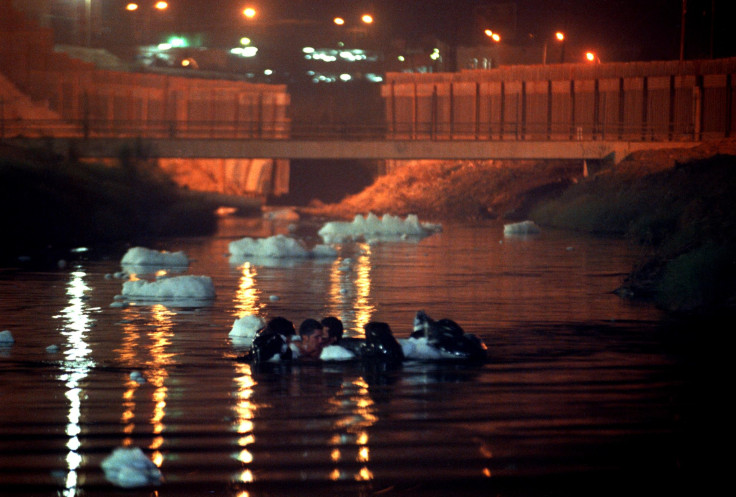
A new report from the University of Arizona has found that deaths among migrants crossing the U.S.-Mexico border have remained steady, even as the number of people who attempt the journey has declined. Since the early 2000s, the "death rate" -- number of deaths per 100,000 Border Patrol apprehensions of undocumented immigrants -- has spiked, with the rate of migrant deaths in 2011 nearly twice as high as that in 2009.
The Pima County, Arizona medical examiners' office has said that people are being found in increasingly remote parts of the border -- presumably to avoid detection from border authorities -- and in more advanced stages of decomposition. The leading cause of death between 2006 to 2012 is "undetermined." The study's co-authors note that the death count captures an unknown percentage of the actual deaths among illegal border crossers.
The study also reported on the demographics of those who died trying to cross the border. The percentage of Central Americans has risen from 9 percent in 2000-2005 to 17 in 2006-2012. But between 1990 and 2012, the deceased were most typically males around age 30, from central or southern Mexico. Thirteen percent of the deceased were between 10 and 19 years of age, while 37 percent were between 20 and 29.
Bruce Anderson, co-author on the report and forensic anthropologist and the Pima County office, told a University of Arizona newspaper, "These are young people in the prime of life. They are impoverished people coming here in the hopes of supporting their families."
RELATED: Who Are The 7 Democrats Who Might Vote Against Immigration Reform?
RELATED: House Booed As DREAMer Deferral Voted Down
RELATED: Raul Labrador Quits House Gang Of Eight Over Healthcare Differences
Robin Reineke, a doctoral candidate in anthropology at the University of Arizona and co-author of the report, told the paper, "We are able to see signs of poverty and economic distress written on their bodies and represented in the items they are carrying."
Reineke contributed data on the migrant death's to a project by graphic designer John Stobbe called "The Things They Carried" -- a hand-drawn poster depicting items commonly found on the bodies of deceased migrants in southern Arizona from 2000-2009, during which the remains of 1,573 individuals were found in the desert. According to the project website, the poster was made possible because the Pima County medical examiner's office, in its attempts to identify the individuals and return their remains to family members, stores items of possible sentimental value found with the person's remains: rosaries, prayer cards, bibles, crosses, amulet pouches and other religious paraphernalia as well as photographs, letters, mementos and phone numbers.
Another of the study's co-authors, Raquel Rubio-Goldsmith, adjunct professor in Mexican-American Studies at the university, told the Arizona Daily Star, "We don't call this a disaster in a legal sense, but in a sense we are dealing with a national disaster."
Since border enforcement efforts began in earnest in the 1990s, the routes traveled by immigrants have been shifting eastward. In the early 90s, areas along the California-Baja border saw big leaps in death rates; in the 2000s, the most fatal zones moved east into southern Arizona; now, counties along the Texas-Tamaulipas border have seen deaths spike. Twenty border crossers died in Brooks County, a rural county in south Texas, in 2010; in 2012, 129 died.
© 2024 Latin Times. All rights reserved. Do not reproduce without permission.